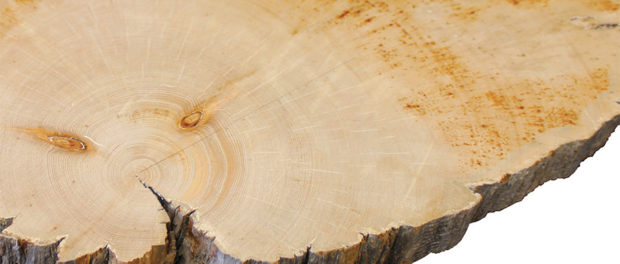Diversity of Growth: Reading the Tree Rings

 Henri Grissino-Mayer is not a psychic; he’s just good at reading tree rings. More than 30 years ago, he wanted to learn a technique that would tell him about past environments, climates, and forest conditions. His professor told him to learn how to read tree rings.
Henri Grissino-Mayer is not a psychic; he’s just good at reading tree rings. More than 30 years ago, he wanted to learn a technique that would tell him about past environments, climates, and forest conditions. His professor told him to learn how to read tree rings.
“I started my own master’s project learning about tree rings from scratch,” says Grissino-Mayer, professor and director of the tree-ring science lab in the Department of Geography. “Tree rings are important because they provide a century-scale perspective on whatever phenomena you are interested in, such as wildfires.”
Since 2002, Grissino-Mayer has gone on record saying Great Smoky Mountains National Park will burn. In November 2016, his warnings became reality when Gatlinburg caught fire. He did not guess this would happen; he knew because of the hundreds of fire scars in the tree ring records of that area.
“I can date the precise year a wildfire occurred by looking at the fire scar,” Grissino-Mayer says. “There is direct evidence of fire in the Smokies every seven to 10 years from the late 1600s to about 1934, then nothing. The forests are primed.”
When the National Park Service established Great Smoky Mountains National Park in 1934, the perception of fire and its role in ecosystem health changed dramatically.
“The reality is we have mismanaged our forests,” Grissino-Mayer says. “Fire was turned out like a light switch. It was well-intentioned at first, but fire creates diversity in the forests. Without fire, our forest becomes something different; a completely unique and novel landscape that never existed before.”
Another issue at play is the urban-wilderness interface. The more people build log cabins at the foothills of the Smokies, the more municipalities need to know about building fire-smart communities and the role fires play in maintaining the landscape people want to see from their back porch.
“Land management agencies know fire needs to be brought back to these forests,” Grissino-Mayer says. “They help fund my research so I can go out and collect samples all across the Southeast to tell them how often fires occurred in the past.”
His expertise in wildfire reconstruction and opportunities for students to get involved in the research has put the Department of Geography on the map as the go-to university for wildfire research.
“We are a recognized leader and at the forefront of wildfire research on both the short- and long-term scale,” Grissino-Mayer says.
In addition to research on fires, he and his students have other projects to keep them busy.
“Anything made of wood can be dated with tree rings if there’s enough tree rings,” Grissino-Mayer says. “We are constantly dating musical instruments and historical structures.”
The work provides his graduate students with practical, hands-on experience doing research, interacting with funding agencies, and publishing their work.
“This is a wonderful experience for our students,” says Grissino-Mayer. “We do important things, and they have no problem getting jobs when they graduate.”
Originally published in Higher Ground, April, 20, 2017.
Leave a comment